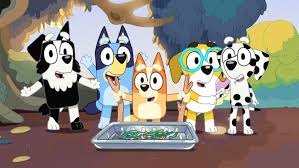Character development represents one of education’s most challenging aspects, requiring approaches that resonate emotionally with young learners while presenting complex ethical concepts in accessible formats. The modern teacher increasingly recognizes that kids animated shows offer unique advantages in this domain, providing character education through narratives that engage children’s imagination while modeling prosocial behaviors and ethical decision-making processes.
The psychological mechanism underlying animation’s effectiveness for character education involves children’s natural tendency to form attachments to animated characters who demonstrate admirable qualities. These parasocial relationships create a foundation for what psychologists call “modeling”—the process through which children adopt behaviors they observe in significant figures. When these characters navigate ethical dilemmas or demonstrate virtues like courage, honesty, or compassion, children internalize these models as behavioral templates.
Educational research supports this approach to character education. Studies comparing direct instruction in ethical principles against narrative-based approaches consistently show that story-based methods produce more lasting impacts on children’s moral reasoning and behavioral choices. Animated stories prove particularly effective due to their visual clarity and emotional resonance, creating memorable ethical frameworks that children reference when facing their own moral challenges.
Classroom implementation typically begins with teachers selecting animated content featuring explicit character education themes. The most effective selections present ethical situations relevant to students’ developmental stage and social context while avoiding overly simplistic moral messaging that lacks nuance. Teachers then develop viewing guides that direct student attention to specific character choices, dilemmas, and consequences portrayed in the animated content.
Discussion protocols transform passive viewing into active moral reasoning. Effective teachers utilize techniques like Socratic questioning, perspective-taking exercises, and moral dilemma analysis to help students process the ethical content presented in animated episodes. These structured conversations develop students’ ethical vocabulary while practicing the reasoning skills necessary for thoughtful moral decision-making in their own lives.
Extension activities deepen the impact of these character education experiences. These might include role-playing scenarios inspired by animated episodes, reflective writing prompts that require application of portrayed values to students’ own experiences, or creative projects that extend animated narratives to explore alternative ethical choices and their potential consequences.
The portrayal of consequences in animated narratives provides particularly valuable teaching opportunities. When animated characters experience realistic outcomes resulting from their choices, children develop cause-effect understanding of ethical behavior. Teachers leverage these narrative consequences to help students recognize how their own choices might similarly impact themselves and others in real-world contexts.
Emotional intelligence development occurs naturally through thoughtfully selected animation. Many quality children’s programs explicitly portray characters identifying, expressing, and regulating emotions—skills central to social-emotional development. Teachers use these portrayals as reference points when helping students navigate their own emotional challenges, creating a shared vocabulary for discussing these complex internal experiences.
Diverse representation within animated content supports inclusive character education. Teachers increasingly select programs featuring characters from various cultural backgrounds, family structures, and ability levels demonstrating universal virtues. This approach helps students recognize shared ethical principles across differences while validating the experiences of children from diverse backgrounds within the classroom community.
Conflict resolution strategies receive particular attention in animation-based character education. Many children’s programs explicitly model constructive approaches to interpersonal conflicts, providing teachers with reference scenarios for classroom management. When conflicts arise among students, teachers can reference similar animated situations, asking students to recall how favorite characters resolved comparable challenges.
Parent partnerships strengthen animation-based character education. When teachers communicate which character traits and ethical principles are being explored through animated content, parents can reinforce these lessons through conversations at home. This consistency between school and home messaging creates a cohesive ethical framework that supports children’s developing moral reasoning.
The measurable impacts of this approach appear in classroom climate and student behavior. Schools implementing structured animation-based character education typically report reduced disciplinary incidents and improved prosocial behavior among students. These benefits extend beyond classroom management to create learning communities where students demonstrate increased empathy, cooperation, and personal responsibility—essential foundations for both academic success and lifelong character development.

